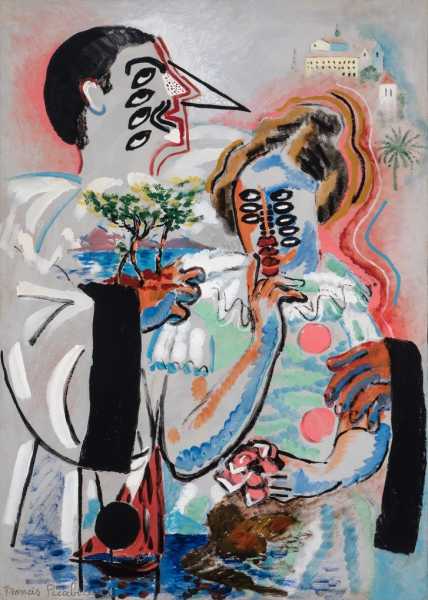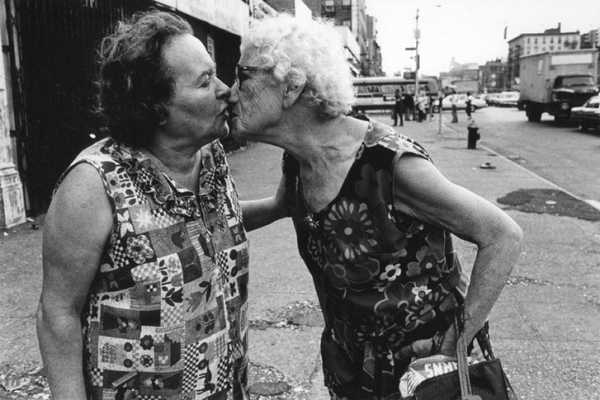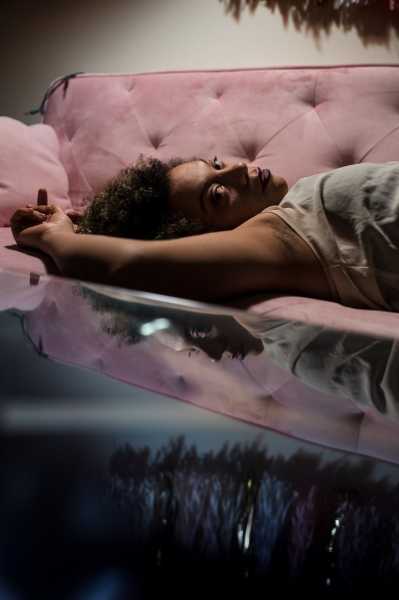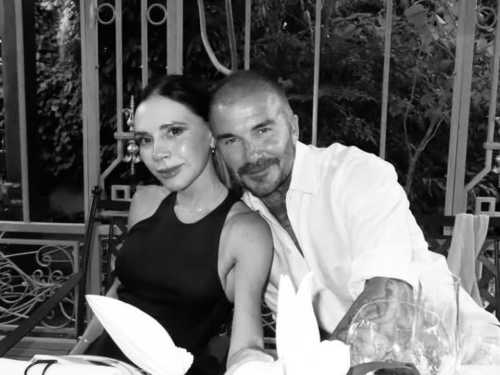
The big shebang this week is the Met Breuer’s “Like Life: Sculpture,
Color, and the Body,” a sprawling, at times carnivalesque survey of
three-dimensional approaches to the human figure over the past two
thousand years. A few blocks north, at the museum’s Beaux-Arts HQ, there
was a less splashy, but no less momentous, unveiling: the redesign of
the museum’s musical instrument galleries, which have been shuttered for
the past two years. Part of me will miss the former cramped quarters,
which felt like stumbling onto a secret compartment from a quainter
era—some of the labels in the wall-mounted cases were still typewritten
index cards. The new, airy, open-plan installation, in contrast, has
audio and video kiosks. My favorite addition is a dazzling display of
brass instruments (and one conch shell, carved in the Republic of
Vanuatu, in the South Pacific), suspended in midair inside a giant
vitrine, as if they are dancing in space. The sculptural finesse of the
objects—a spindly German brass trumpet in D, designed by Andreas
Naeplaesnigg, in 1790; a coiled horn, clear with red-and-blue stripes,
fashioned by glass blowers in southern Belgium in the nineteenth
century—is undeniable, an invitation to lend music your eyes, as well as
your ears. Are instruments works of art? Consider Kandinsky, who
believed that his paintings could induce us to hear musical chords. He
advised against getting hung up on distinctions between sight and sound,
and wrote, “Just ask yourself whether the work has enabled you to ‘walk
about’ into a hitherto unknown world. If the answer is yes, what more do
you want?” Below are some of our suggestions for your walkabout over the
weekend.
UPTOWN
Allan Kaprow
Kaprow is best known for inventing “happenings,” a term he coined sixty
years ago in the essay “The Legacy of Jackson Pollock.” But he started
out as a painter, as this museum-quality show makes sensationally clear.
Several mid-fifties views of the George Washington Bridge, portraying
both the bridge and the sky with bars of glowing color, may bring to
mind the early realist work of Piet Mondrian. Two “action collages” from
the same period, incorporating jagged pieces of foil and fabric, are
nearly transcendental in their exuberance. A series of colorful,
vigorously impastoed portraits push against formal limits with strange
cropping. By the nineteen-seventies, Kaprow was making extremely simple
charcoal drawings of lines and circles, inspired by Zen breathing
exercises. The energy of the assembled works is so consistently restless
that it suggests an artist for whom one medium alone would never
suffice. As Kaprow inscribed on the stretcher bars of his canvas
“Standing Nude Against Red and White Stripes,” which he completed in
1955, “I will always be a painter. Of sorts.” Through April 7th. (Hauser
& Wirth, 32 E. 69th St. 212-794-4970.)
“Kiss Off”

Artwork by Francis Picabia. Courtesy ARS / ADAGP / Luxembourg & Dayan
This eighteen-person meditation on a Hallmark-worthy theme (the subject
of kisses in art) steers clear of schmalz, thanks to the smarts of its
curator, Francesco Bonami. It opens with a 1970 lithograph of undulating
red lipstick marks, made by the experimental filmmaker Joyce Wieland
while she sang “O Canada.” The work hangs next to the show’s title
piece, “Kiss Off,” made a year later (in Canada) by Vito Acconci
(1940-2017), who applied lipstick to his mouth, kissed his hand, and
transferred the marks to a lithography stone. The show closes with
another game of compare and contrast. In Francis Picabia’s strange,
brightly colored “Couple de Monstres,” from 1925-27, two lovers embrace.
Nearby, in Felix Gonzalez-Torres’s heartrending untitled sculpture, two
rings of silver-plated brass hang side by side on a wall, so close that
they appear fused together—but, in fact, they’re not touching at all.
Through April 14th. (Luxembourg & Dayan, 64 E. 77th St. 212-452-4646.)
CHELSEA
Barnaby Furnas
The mid-career, Brooklyn-based painter tackles his angst, both aesthetic
and political, by depicting echt American imagery with a custom-designed
arsenal of technologically enhanced sprays, drips, and washes. “Mt.
Rushmore,” with its stained-gray triangles under cloudy streaks of
white, seems to be as much about the construction of a painting as it is
about national monuments. But “The Rally,” in which a generic
Presidential figure behind a zigzagging podium waves to a sea of
upraised hands, while tiny fighter jets strafe his head, makes it clear
that Furnas is deeply concerned with the messy spectacle of America now.
Through April 14th. (Boesky, 509 W. 24th St. 212-680-9889.)
Robert Gober
In the American sculptor’s first New York solo show since his 2014 MOMAretrospective, an abundance of small works mine his familiar, if
mysterious, themes. Barred windows and patches of forest (images that
recall past installations) are nestled inside bare chests in a series of
pencil drawings. Twenty wall-mounted assemblages are nursery-ready nods
to Joseph Cornell, with green apples and blue robins’ eggs suspended
against cloth diapers and floral-patterned wallpaper. Gober’s
idiosyncratic lexicon, drawn in part from childhood memories, lends his
work an eerie lyricism, whatever the medium or scale. The pathos of a
little, sunken cellar door near the start of the show—a
foam-core-and-balsa-wood maquette for a sculpture first exhibited at the
2001 Venice Biennale—gives way to the near-mythic aura of its full-sized
counterpart, which provides the show with its finale. Through April
21st. (Marks, 526 W. 22nd St. 212-243-0200.)
Arlene Gottfried

Photograph by Arlene Gottfried / Courtesy Daniel Cooney Fine Art
Aptly titled “A Lifetime of Wandering,” this posthumous exhibition of
the photographer’s street scenes and portraits captures New York’s
demimonde of the nineteen-seventies and eighties from a warm and
impromptu perspective. Among Gottfried’s coöperative subjects were
Brooklyn beachgoers, Harlem gospel singers, and disco-era clubbers, as
well as underground icons and international celebrities. A shot of the
transgender activist and performer Marsha P. Johnson shows her posing,
with a wide smile, in the middle of the street. Diana Ross, standing by
a wall and dressed to blend in, likewise beams for the camera.
Gottfried, who died last year at the age of sixty-six, also photographed
those closest to her. One of the show’s high points is “Mommie Kissing
Bubbie on Delancey Street,” from 1979, which celebrates two generations
of her Jewish immigrant family in an unguarded moment on the Lower East
Side. Through April 28th. (Cooney, 508 W. 26th St. 212-255-8158.)
Oliver Laric
Despite the cartoonish friendliness of the young Austrian artist’s drawn
lines, there’s an undeniable melancholy to his new video, “Yet to Be
Titled,” in which animals and people transform in a series of surreal
vignettes. Two hairy male faces, made up of curving dashes, rearrange
into monkeys; a teapot evolves into an ostrich; a marching phalanx of
ants carries grasshopper legs and a tiny human embryo. This fantastical
sequence seems to make a case for a transhumanist outlook, reinforced by
three polyurethane sculptures of anthropomorphic dogs, each titled
“Hundemensch.” Through April 14th. (Metro Pictures, 519 W. 24th St.
212-206-7100.)
DOWNTOWN
Elle Pérez

Photograph Courtesy Elle Pérez / 47 Canal
Nine enigmatic pictures by the New York photographer create a world of
their own. “Nicole” is an intimate, dusky portrait of a young woman
lying on a pink couch, her arms thrown above her head, glancing sideways
at the camera as her reflection is mirrored in a glossy coffee table
below. In “Stone Bloom,” an expanse of dark rock is marked with rust-red
splotches, echoing the blood-covered hand in “Dick,” a neighboring
cropped composition of tangled bare limbs. In previous work, Pérez has
focussed on L.G.B.T. night clubs and an underground wrestling scene in
the Bronx. This show, with its careful edit of subjects and moods, feels
unified by more formal associations, and the effect is as powerful as
ever. Through April 8th. (47 Canal, 291 Grand St. 646-415-7712.)
Jacolby Satterwhite
Pick up a pink glow-stick bracelet on your way into “Blessed Avenue,”
Satterwhite’s impressive début with the gallery. A large screen bisects
the black-walled space, playing a hallucinatory video—a Boschian sci-fi
tableau—which attests to the artist’s command of digital animation and
3-D-modelling software. In the endless simulated shot, dancers and S & M
performers populate a gay mega-club, a maze of fragmented machinery
apparently adrift in space. The dystopian scene has a surprisingly
poignant twist: the action is set to an electronic soundtrack created
from cassette tapes of the artist’s mother, singing a capella. In the
accompanying installation, a conceptual boutique, the artist hawks
affordable items from pill organizers to tambourines, all printed with
dashed-off drawings and charming, handwritten notes. Through May 6th.
(Brown, 291 Grand St. 212-627-5258.)
Sourse: newyorker.com






